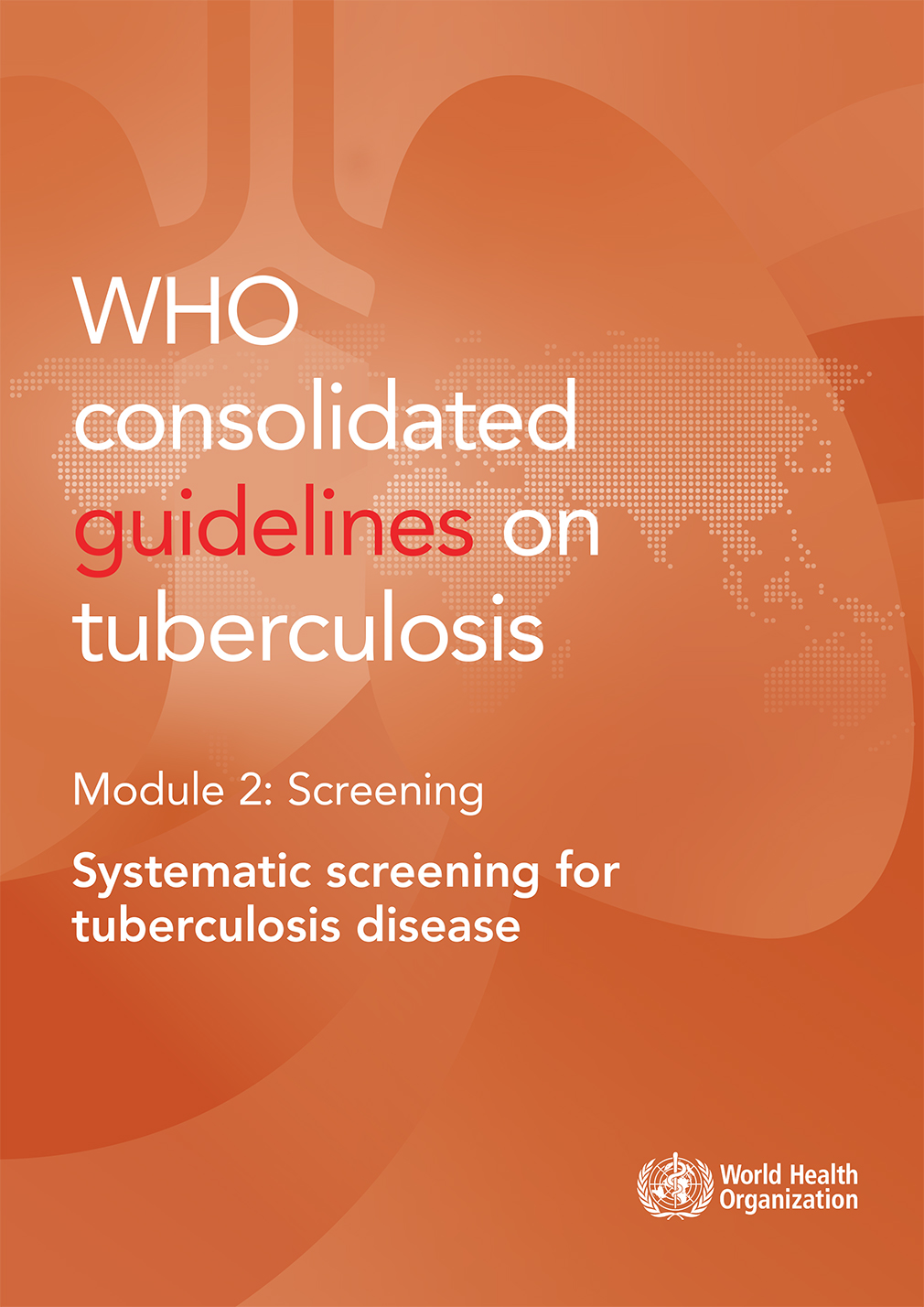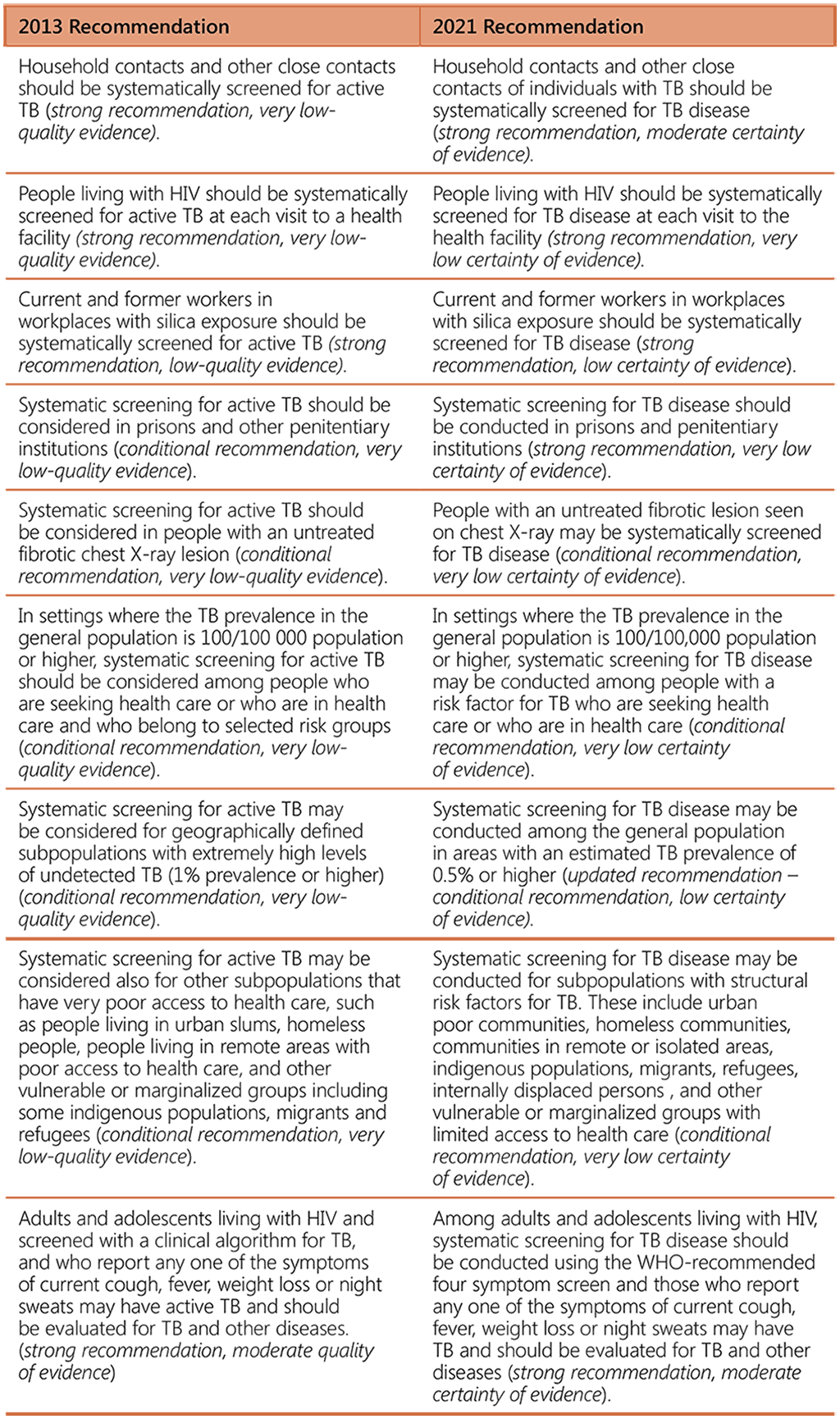2.7 Systematic screening for TB disease among people attending health care services who have clinical risk factors for TB
7. In settings where the TB prevalence in the general population is 100/100 000 population or higher, systematic screening for TB disease may be conducted among people with a risk factor for TB who are either seeking health care or who are already in care
(existing recommendation: conditional recommendation, very low certainty of evidence).
8. People with an untreated fibrotic lesion seen on chest X-ray may be systematically screened for TB disease

 Feedback
Feedback
